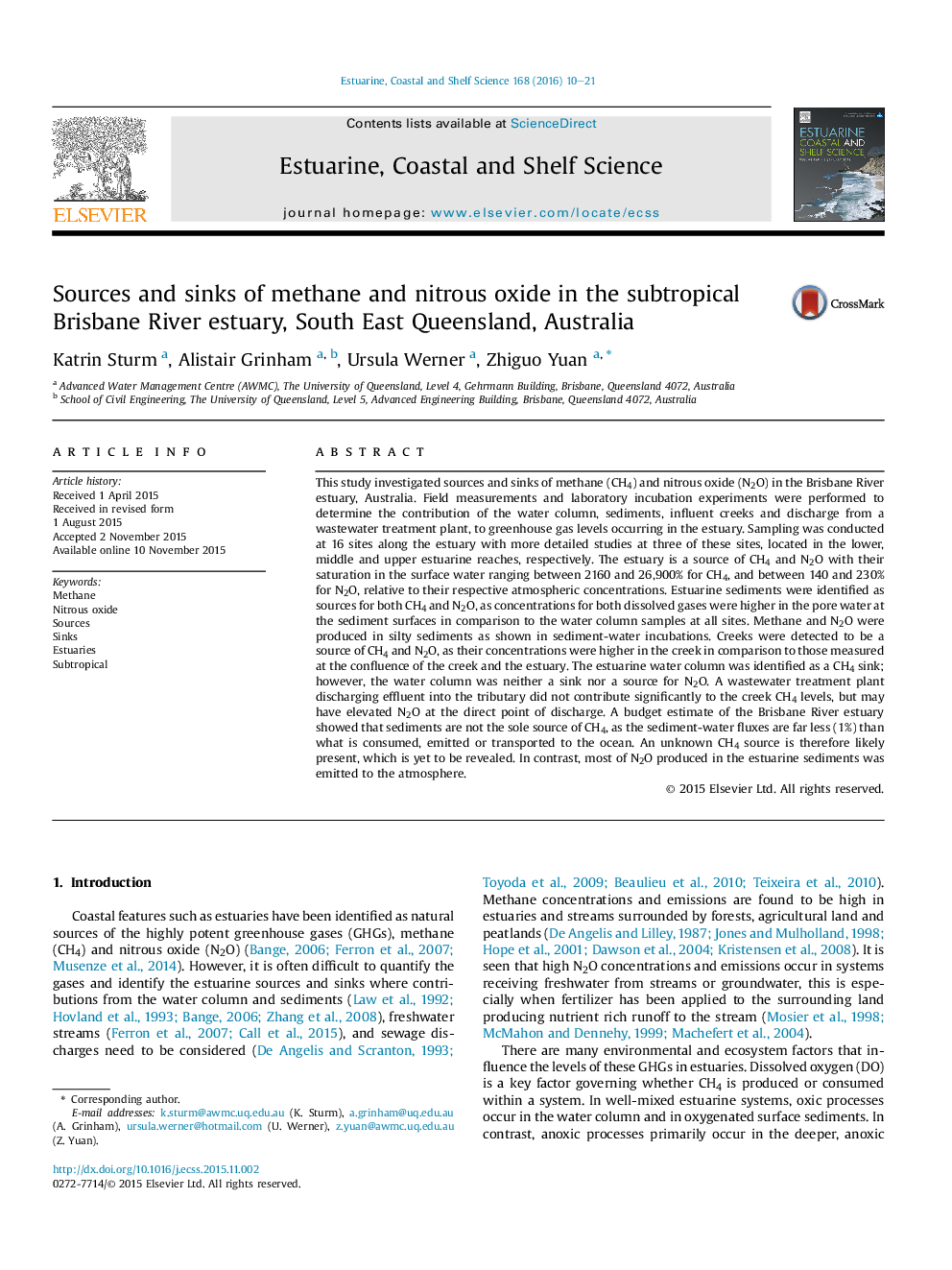| کد مقاله | کد نشریه | سال انتشار | مقاله انگلیسی | نسخه تمام متن |
|---|---|---|---|---|
| 4539322 | 1626631 | 2016 | 12 صفحه PDF | دانلود رایگان |
• We investigate estuarine sources and sinks for CH4 and N2O.
• The estuary is a significant source of atmospheric CH4 and N2O.
• Sediments and creeks were identified as sources of CH4 and N2O.
• The estuarine water column was a sink for CH4.
• The estuarine water column was no clear sink or source for N2O.
This study investigated sources and sinks of methane (CH4) and nitrous oxide (N2O) in the Brisbane River estuary, Australia. Field measurements and laboratory incubation experiments were performed to determine the contribution of the water column, sediments, influent creeks and discharge from a wastewater treatment plant, to greenhouse gas levels occurring in the estuary. Sampling was conducted at 16 sites along the estuary with more detailed studies at three of these sites, located in the lower, middle and upper estuarine reaches, respectively. The estuary is a source of CH4 and N2O with their saturation in the surface water ranging between 2160 and 26,900% for CH4, and between 140 and 230% for N2O, relative to their respective atmospheric concentrations. Estuarine sediments were identified as sources for both CH4 and N2O, as concentrations for both dissolved gases were higher in the pore water at the sediment surfaces in comparison to the water column samples at all sites. Methane and N2O were produced in silty sediments as shown in sediment-water incubations. Creeks were detected to be a source of CH4 and N2O, as their concentrations were higher in the creek in comparison to those measured at the confluence of the creek and the estuary. The estuarine water column was identified as a CH4 sink; however, the water column was neither a sink nor a source for N2O. A wastewater treatment plant discharging effluent into the tributary did not contribute significantly to the creek CH4 levels, but may have elevated N2O at the direct point of discharge. A budget estimate of the Brisbane River estuary showed that sediments are not the sole source of CH4, as the sediment-water fluxes are far less (1%) than what is consumed, emitted or transported to the ocean. An unknown CH4 source is therefore likely present, which is yet to be revealed. In contrast, most of N2O produced in the estuarine sediments was emitted to the atmosphere.
Figure optionsDownload high-quality image (240 K)Download as PowerPoint slide
Journal: Estuarine, Coastal and Shelf Science - Volume 168, 5 January 2016, Pages 10–21
